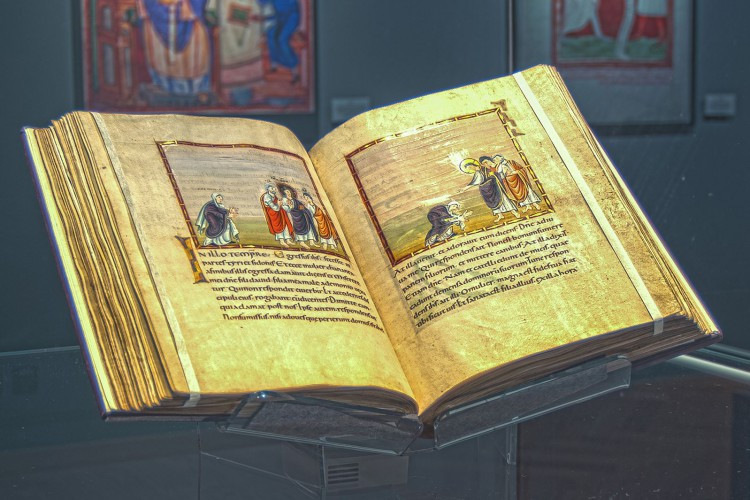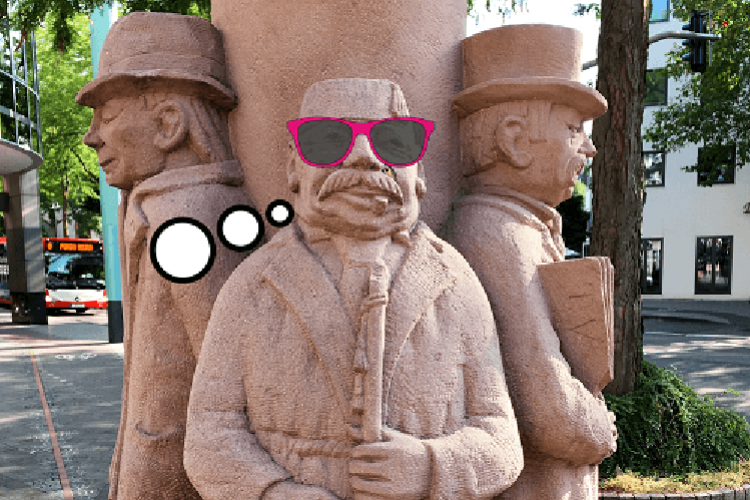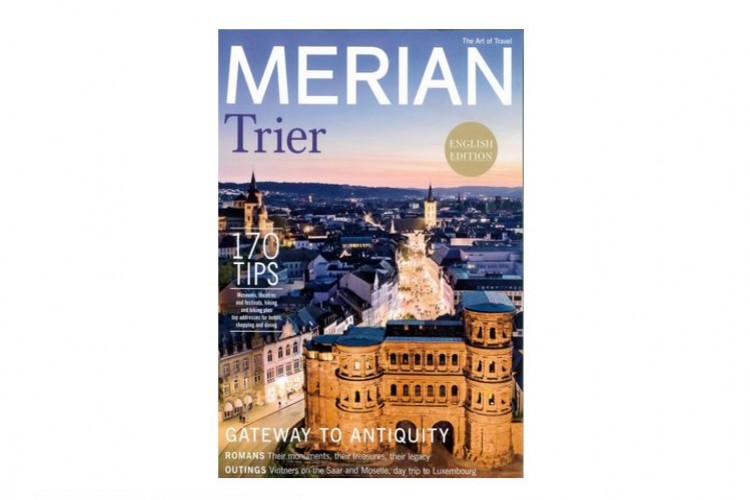Read more
It is believed the Codex was created for Egbert’s personal use when holding mass at the cathedral. As a book of pericopes, the Codex contained the excerpts from the gospels that were read at services throughout a church year. Egbert later gifted the Codex to the Basilica of St Paulinus, where it was used until well into the 18th century, before ending up at the city library. Today, it is kept there in the ‘treasury’, attesting to Egbert’s tremendous patronage of illumination at the time. So he more than earned his place in the history books!
Until July 2024, the Codex Egberti is on loan as part of the Baden-Württemberg state exhibition in Constance and is not on display in the original treasure chamber. From mid-August, interested parties can once again admire the codex in the Trier Treasury.
However, the World Documentary Heritage "Ada Gospels" is not affected by this and remains on display.
A must for: Bible enthusiasts. Bookworms. Gold-leaf lovers. Middle Ages fans and people who prefer writing important things by hand.
UNESCO World Heritage Site: 100%
Wow effect: 80%
Shiny gold: 20%
PSSSST! THE INSIDER TIP:
Egbert’s Midas touch when it came to patronage of the arts was also evident in goldsmithing. From 977 onwards, the Egbert Workshop named after him produced some of the most famous pieces of the Ottonian age. One of its main works can today be admired in the cathedral’s treasury: St Andrew’s Portable Altar, with an almost life-size golden food on its lid. This is in reference to the sandal of Andrew the Apostle, whose sole is situated in a box-shaped reliquary. Studded with precious stones, ivory, peals and enamel, the portable altar is a dazzling masterpiece not to be missed – as is the elaborate cross reliquary, also created under Egbert’s auspices.
Until July 2024, the Codex Egberti is on loan as part of the Baden-Württemberg state exhibition in Constance and is not on display in the original treasure chamber. From mid-August, interested parties can once again admire the codex in the Trier Treasury.
However, the World Documentary Heritage "Ada Gospels" is not affected by this and remains on display.
A must for: Bible enthusiasts. Bookworms. Gold-leaf lovers. Middle Ages fans and people who prefer writing important things by hand.
UNESCO World Heritage Site: 100%
Wow effect: 80%
Shiny gold: 20%
PSSSST! THE INSIDER TIP:
Egbert’s Midas touch when it came to patronage of the arts was also evident in goldsmithing. From 977 onwards, the Egbert Workshop named after him produced some of the most famous pieces of the Ottonian age. One of its main works can today be admired in the cathedral’s treasury: St Andrew’s Portable Altar, with an almost life-size golden food on its lid. This is in reference to the sandal of Andrew the Apostle, whose sole is situated in a box-shaped reliquary. Studded with precious stones, ivory, peals and enamel, the portable altar is a dazzling masterpiece not to be missed – as is the elaborate cross reliquary, also created under Egbert’s auspices.
Opening hours
Today, 17.12.2025:
Closed
Tuesdays - Sundays: 10 a.m. - 5 p.m. (also on public holidays)
For conservation reasons, a facsimile of the Codex Egberti is currently on display.
Admission
Adults: € 5.00
Reduced *: € 3.00
Children (under 10 years): free
Student (in class): € 1.00
Families **: € 8.00
* Students, students, seniors from 65 years, children 10 - 18 years, people with disabilities
** 1-2 adults and children up to 18 years
Audioguide / App
In addition to audio guide tours in German, French, English and Dutch, an app for download is provided for a fee.
Use Audio Guide € 2.00
Download the guide app: € 2.00
Reduced *: € 3.00
Children (under 10 years): free
Student (in class): € 1.00
Families **: € 8.00
* Students, students, seniors from 65 years, children 10 - 18 years, people with disabilities
** 1-2 adults and children up to 18 years
Audioguide / App
In addition to audio guide tours in German, French, English and Dutch, an app for download is provided for a fee.
Use Audio Guide € 2.00
Download the guide app: € 2.00
Contact
Schatzkammer der Wissenschaftlichen Bibliothek der Stadt Trier
Weberbach 25
54290 Trier
Tel. +49 (0)651 718-1427
www.stadtbibliothek-weberbach.de
Weberbach 25
54290 Trier
Tel. +49 (0)651 718-1427
www.stadtbibliothek-weberbach.de




